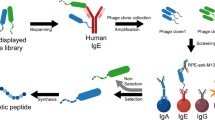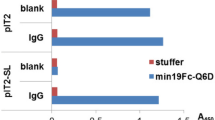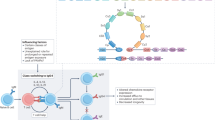Abstract
ABSTRACT: The peptides that were produced by the treatment of the purified group II antigen of Dermatophagoides pteronyssinus with cyanogen bromide, lysylendopeptidase, Staphylococcus aureus V8 protease, or n-tosyl-l-phenylalanylchloromethyl ketone-treated trypsin were examined for their binding with IgG and IgE from children with bronchial asthma by immunoblotting analysis. Both IgG and IgE bound to the peptides from the amino terminus to the 76th residue and the carboxyl terminal side from the 13th or 15th residue; on the other hand, both Ig failed to bind to the carboxyl terminal side from the 39th, 56th, or 77th residue. The data demonstrated that peptides lacking residues 1 to 15 possessed the ability to bind Ig, whereas those lacking residues 1 to 39 had lost it. The present study indicates that the amino terminal half of the group II antigen of Dermatophagoides pteronyssinus is more important for the binding of IgG and IgE than the carboxyl terminal half and suggests that the residues 15 to 39 may be directly related to the binding of both IgG and IgE.
Similar content being viewed by others
Log in or create a free account to read this content
Gain free access to this article, as well as selected content from this journal and more on nature.com
or
Author information
Authors and Affiliations
Rights and permissions
About this article
Cite this article
Oshika, E., Kuroki, Y., Sakiyama, Y. et al. A Study of the Binding of Immunoglobulin G and Immunoglobulin E from Children with Bronchial Asthma to Peptides Derived from Group II Antigen of Dermatophagoides pteronyssinus. Pediatr Res 33, 209–213 (1993). https://doi.org/10.1203/00006450-199302000-00025
Received:
Accepted:
Issue date:
DOI: https://doi.org/10.1203/00006450-199302000-00025
This article is cited by
-
Dust mite allergens
Clinical Reviews in Allergy and Immunology (1995)



